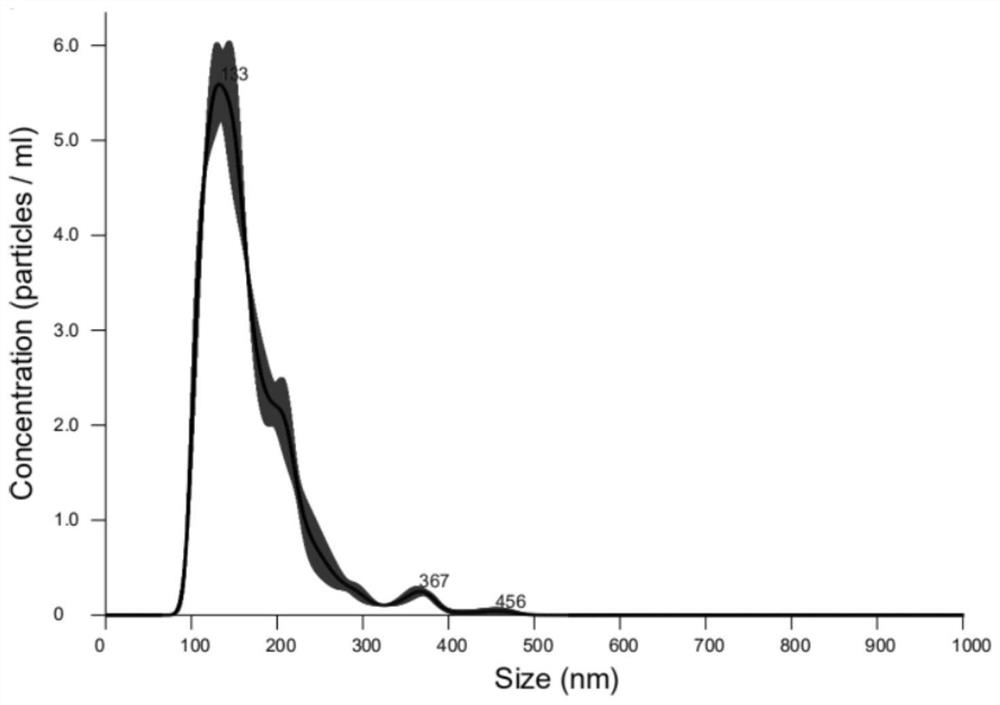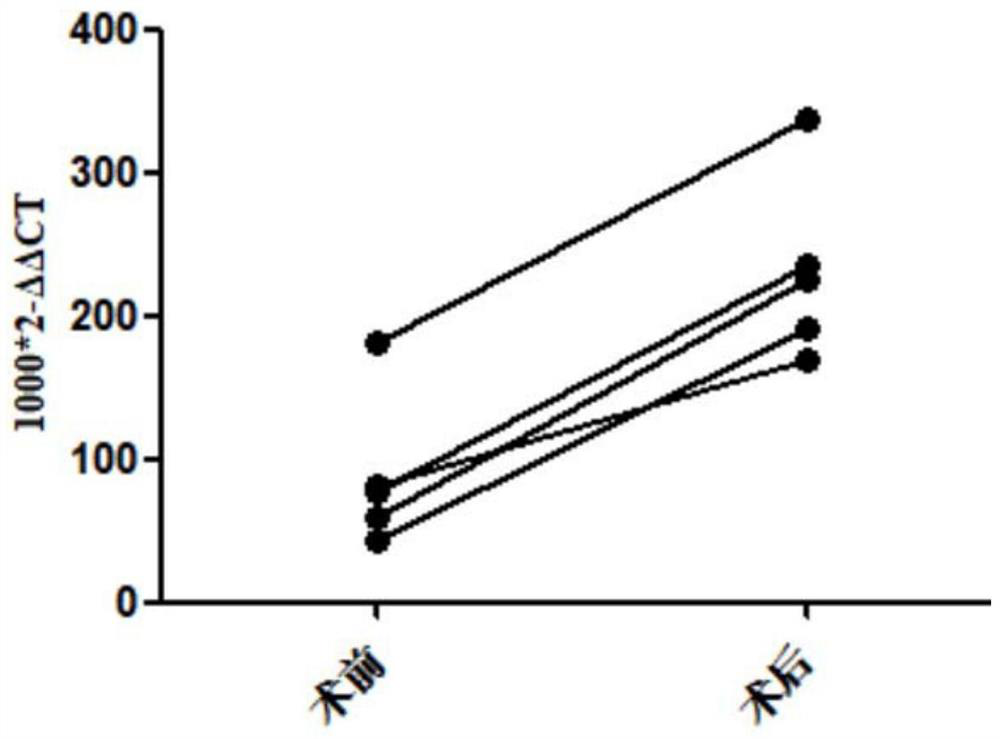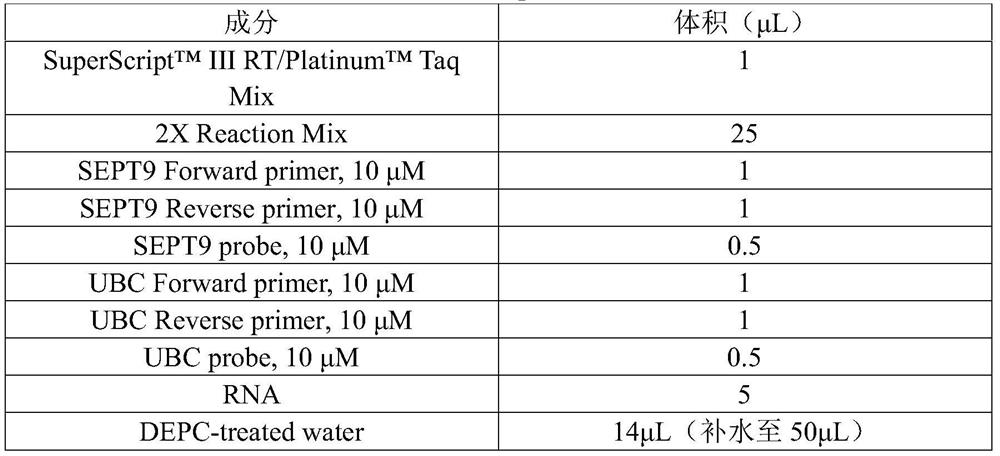Application of SEPT9 mRNA in exosome in diagnosis of breast cancer
An exosome and breast cancer technology, applied in the field of biomedical diagnosis, can solve the problems of reducing the positive rate of patients, inapplicable to clinical disease diagnosis, and high positive missed detection rate, avoiding excessive tissue biopsy, solving breast malignant nodules, Ease of clinical promotion
- Summary
- Abstract
- Description
- Claims
- Application Information
AI Technical Summary
Problems solved by technology
Method used
Image
Examples
Embodiment 1
[0135] In the following examples, it is analyzed by SEPT9 mRNA assay, which is designed to run on a fluorescent quantitative PCR detection platform to verify the differential performance of marker mRNA expression in benign breast nodules and breast malignant nodules, so as to provide markers An indication of precision for differentiating patients with benign breast nodules from malignant breast nodules.
[0136] Using the Lightcycle480 platform to analyze the performance of markers, the marker is SEPT9:
[0137] The experimental method is as follows:
[0138] 1. Plasma Processing:
[0139] Whole blood was collected using EDTA anticoagulant tubes, and plasma was obtained by centrifugation within 2 hours at room temperature. Centrifugation conditions: 1500g, 10 minutes, absorb the supernatant, centrifuge again: 15000g, centrifuge for 10 minutes, absorb the supernatant, which is the separated plasma.
[0140] 2. Exosome identification:
[0141] 2mL of plasma was filtered with a...
Embodiment 2
[0154] In the following examples, it is analyzed by SEPT9 mRNA assay, which is designed to run on a fluorescent quantitative PCR detection platform to verify the expression of markers in different samples and evaluate its breast cancer detection performance.
[0155] In this example, 31 cases of plasma samples were enrolled, including 17 cases of breast malignant nodule samples, specifically 9 cases of ductal carcinoma in situ with microinvasion, 5 cases of ductal carcinoma in situ, and 3 cases of lobular carcinoma in situ; 14 cases of breast cancer Benign nodules, specifically 10 cases of fibroadenoma, 3 cases of papilloma, and 1 case of ductal epithelial hyperplasia. Detect SEPT9 mRNA in exosomes, and investigate the target's ability to distinguish benign from malignant breast nodules.
[0156] See Example 1 for plasma exosome extraction, RNA extraction and detection. The test results are shown in Table 3.
[0157] Table 3: Differentiation between benign and malignant brea...
Embodiment 3
[0162] The test sample type in this embodiment is: plasma, and a total of 91 samples were enrolled. Among them, 37 cases of breast cancer: 3 cases of intermediate-grade ductal carcinoma in situ, 5 cases of high-grade ductal carcinoma in situ, 17 cases of invasive ductal carcinoma, 3 cases of lobular carcinoma in situ, and 9 cases of invasive lobular carcinoma; 54 cases of non-breast cancer: 13 cases of lung cancer, 10 cases of colorectal cancer, 13 cases of benign breast disease (7 cases of mastitis, 4 cases of papilloma, 2 cases of ductal epithelial hyperplasia) and 18 cases of healthy subjects.
[0163] See Example 1 for plasma exosome extraction, RNA extraction and detection. The test results are shown in Table 4.
[0164] Table 4: Auxiliary diagnosis of breast cancer
[0165]
[0166]
[0167]
[0168]
[0169] Results: 37 cases of breast cancer, 34 cases were positive, the sensitivity was: 91.89%; 54 cases of non-breast cancer, 41 cases were negative, the sp...
PUM
| Property | Measurement | Unit |
|---|---|---|
| diameter | aaaaa | aaaaa |
| Sensitivity | aaaaa | aaaaa |
| Sensitivity | aaaaa | aaaaa |
Abstract
Description
Claims
Application Information
 Login to View More
Login to View More - R&D
- Intellectual Property
- Life Sciences
- Materials
- Tech Scout
- Unparalleled Data Quality
- Higher Quality Content
- 60% Fewer Hallucinations
Browse by: Latest US Patents, China's latest patents, Technical Efficacy Thesaurus, Application Domain, Technology Topic, Popular Technical Reports.
© 2025 PatSnap. All rights reserved.Legal|Privacy policy|Modern Slavery Act Transparency Statement|Sitemap|About US| Contact US: help@patsnap.com



